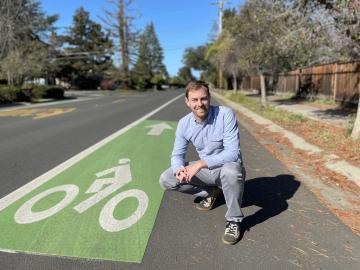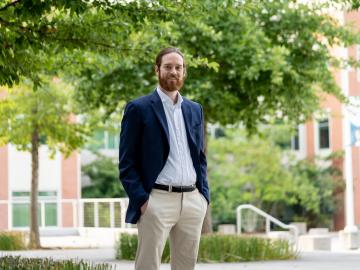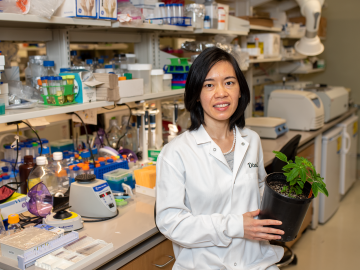
Filter News
Area of Research
News Topics
- (-) 3-D Printing/Advanced Manufacturing (8)
- (-) Biomedical (5)
- (-) Composites (1)
- (-) Cybersecurity (3)
- (-) Energy Storage (6)
- (-) Environment (36)
- (-) Exascale Computing (5)
- (-) Frontier (4)
- (-) Materials (8)
- (-) Physics (4)
- Advanced Reactors (1)
- Artificial Intelligence (8)
- Big Data (8)
- Bioenergy (20)
- Biology (18)
- Biotechnology (3)
- Buildings (4)
- Chemical Sciences (4)
- Clean Water (4)
- Computer Science (25)
- Coronavirus (3)
- Fusion (6)
- Grid (3)
- High-Performance Computing (7)
- Hydropower (3)
- Isotopes (1)
- ITER (1)
- Machine Learning (5)
- Materials Science (7)
- Mercury (2)
- Microscopy (8)
- Nanotechnology (4)
- National Security (7)
- Neutron Science (11)
- Nuclear Energy (9)
- Partnerships (1)
- Polymers (1)
- Quantum Computing (5)
- Quantum Science (5)
- Security (2)
- Simulation (3)
- Space Exploration (1)
- Summit (8)
- Transportation (6)
Media Contacts

A study led by researchers at ORNL could help make materials design as customizable as point-and-click.

ORNL biogeochemist Elizabeth Herndon is working with colleagues to investigate a piece of the puzzle that has received little attention thus far: the role of manganese in the carbon cycle.

When Andrew Sutton arrived at ORNL in late 2020, he knew the move would be significant in more ways than just a change in location.

David McCollum is using his interdisciplinary expertise, international networks and boundless enthusiasm to lead Oak Ridge National Laboratory’s contributions to the Net Zero World initiative.

A study by researchers at the ORNL takes a fresh look at what could become the first step toward a new generation of solar batteries.

Bryan Piatkowski, a Liane Russell Distinguished Fellow in the Biosciences Division at ORNL, is exploring the genetic pathways for traits such as stress tolerance in several plant species important for carbon sequestration

A team of researchers working within the Center for Bioenergy Innovation at ORNL has discovered a pathway to encourage a type of lignin formation in plants that could make the processing of crops grown for products such as sustainable jet fuels easier and less costly.

Surrounded by the mountains of landlocked Tennessee, Oak Ridge National Laboratory’s Teri O’Meara is focused on understanding the future of the vitally important ecosystems lining the nation’s coasts.

Spanning no less than three disciplines, Marie Kurz’s title — hydrogeochemist — already gives you a sense of the collaborative, interdisciplinary nature of her research at ORNL.

A rapidly emerging consensus in the scientific community predicts the future will be defined by humanity’s ability to exploit the laws of quantum mechanics.


